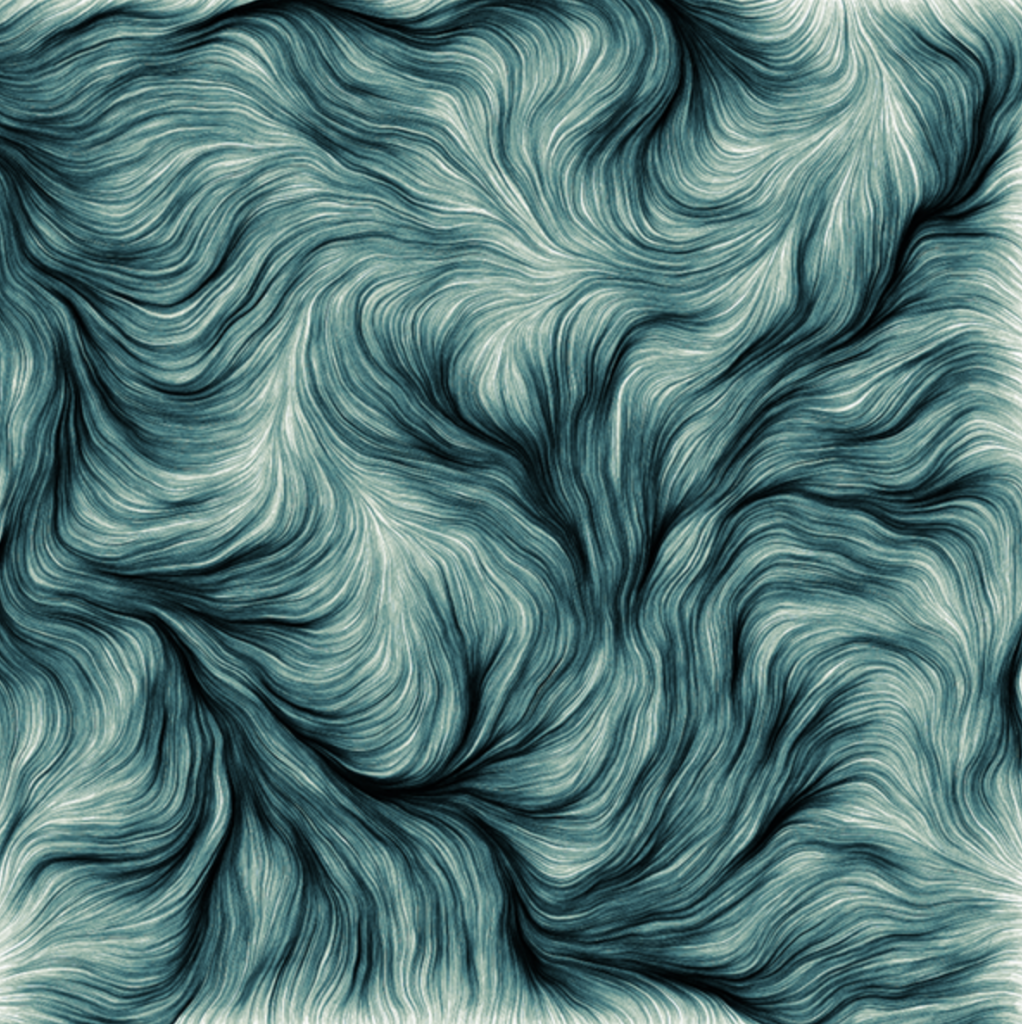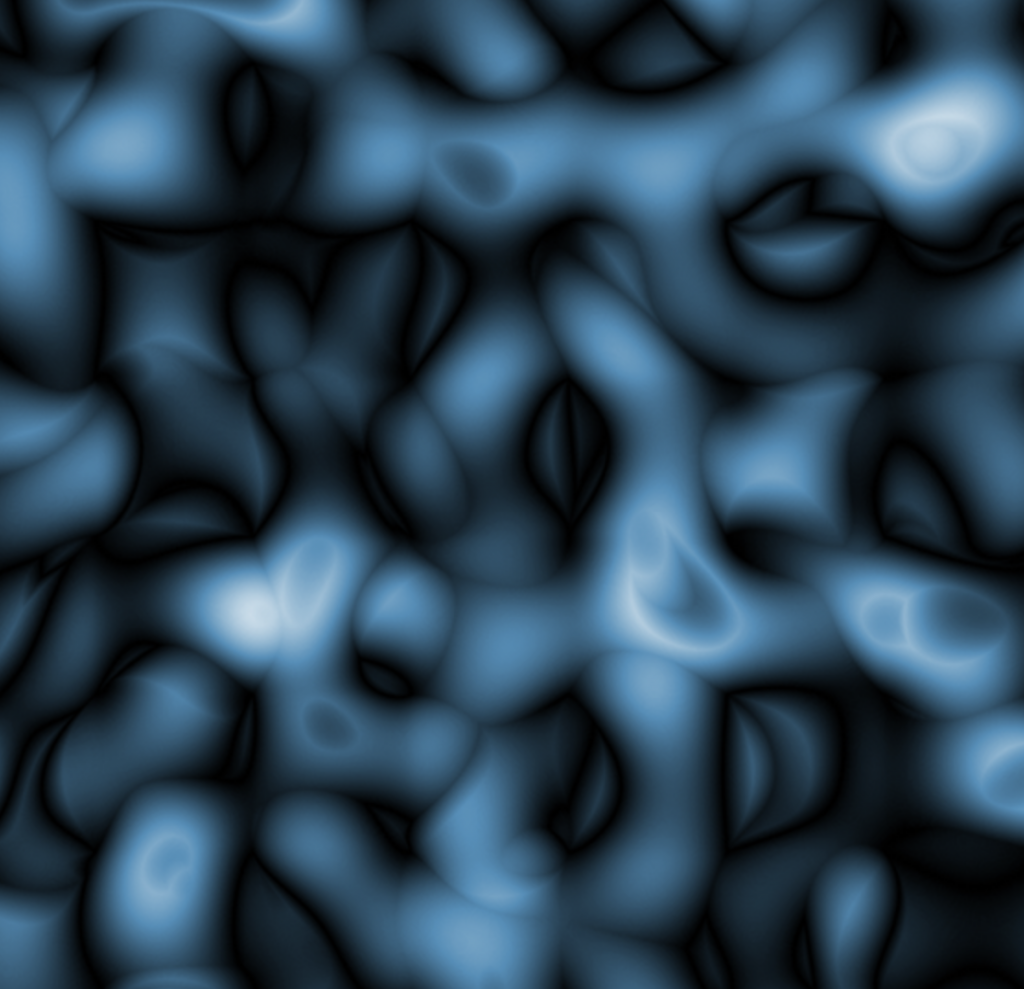35 years ago, Ken Perlin won an academic award for discovering a technique now called “Perlin Noise.” It is defined as a type of gradient noise that interpolates random values to create smooth transitions through the noise function. While it is readily controllable, Perlin Noise can also be embedded flexibly into other mathematical expressions to create a wide range of textures that imitate the controlled random appearance of textures in nature.
Thus, this technique is a powerful algorithm that is used in methodical content generation, particularly popular in visual media from games to movies for adding realistic randomness to CG renderings of smoke, fire, and water. Likewise, the bottom artworks “Perlin Noise Patterns” by the artist Martin Tinram really inspired me, especially with how delicate and sophisticated the texture are rendered. It was astonishing how they were computer generated, as they looked so detailed and realistic, almost like photographs. The effects are mostly present in the 2nd and 3rd dimension, although it could be extended into the 4th dimension as well. With this, I learned how significant randomness can be in computation and design, as it could be both readily controlled for specific aesthetic results, yet unprecedented at the same time.


![[OLD FALL 2019] 15-104 • Introduction to Computing for Creative Practice](wp-content/uploads/2020/08/stop-banner.png)